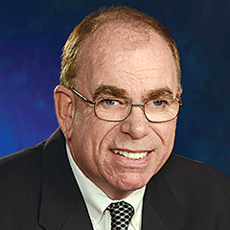
In the best of times, long-term care delivers a stressful way to make a living. And few would describe current conditions the best of times.
The reality is that most of us are feeling lots of pressure in the long-term care workplace right about now.
Pressure to do more with less. Pressure to find some semblance of work/life balance. Pressure to deliver optimal care. Pressure to meet ever-changing rules and regulations. Pressure to meet payroll. Maybe even pressure to remain employed. The list goes on.
Small wonder burnout is such a challenge in this field, from top to bottom. And make no mistake about it, burnout is insidious. At the risk of sounding like the last few seconds of a wonder drug ad, it can fuel bad decisions, absenteeism, a reluctance to adapt, anxiety and even depression.
It turns out burnout is not a one-size-fits-all kind of thing. In fact, a report from meQuilibrium identified a half dozen burnout types. They are:
· Soulful Sufferers, who are particularly fragile employees. These are people who really care, but are struggling to be adaptive, and who worry about their work relationships.
· Checked Outs, who are simply going through the motions at work, and probably in life as well. These people are extremely stressed about work and money. We’re not just talking about frontline employees: Nearly a quarter (23%) happen to be managers.
· Status Quos, who are not willing to extend much effort to learn, adapt to new people — or get better at what they do. The last thing they want to deal with is change of any kind.
· Strivers, who display high agility but low resilience, a combo that puts them at high risk for burnout. These folks have a growth mindset, so they are brimming with untapped potential. But their low resilience gives them a 27% increased risk of depression.
· Stretched Superstars, who are loaded with positivity, self-confidence, focus, problem-solving skills, and empathy. These characteristics make them feel like nothing is impossible. But oddly enough, most Stretched Superstars report time and work conflicts, which tend to gang up and undermine their full potential.
· Change Masters, who are those rare individuals who are both resilient and ready to adapt. As such, they are less prone to burnout. These are the people who have the cool, calm and collected attitude that helps them manage stress and challenges. But they are also willing to embrace innovation and deliver high performance. Most Change Masters (75%) see purpose in their work, while 91% report strong problem-solving skills.
(As an aside, I invite you to pick which of these categories that best matches you, and ask someone you trust to do the same for you. You might find that the discrepancy between the two answers is illuminating, if not jarring.)
I’m betting that most of your staff likely falls into the Soulful Sufferers or Change Masters categories, with a smattering of the rest. If that is the case, the danger here is that Soulful Sufferers (along with Strivers) face the highest burnout risk.
Unfortunately, it is all but impossible to eliminate work-related burnout challenges, according to Lucy English, Ph.D., who is the vice president of Research for meQuilibrium.
But that does not mean nothing can be done. Her advice is to try to minimize the stress your workers deal with as much as conditions allow. She adds firms can support employees by training them to manage stress better, and to address the consequences before they impact business metrics like revenue and profit.
Conversely, you might want to ignore her advice. In that case, simply make sure every employee in your organization happens to be a Change Master. That should prove only slightly more challenging than juggling paper plates in a windstorm.
John O’Connor is Editorial Director for McKnight’s.




